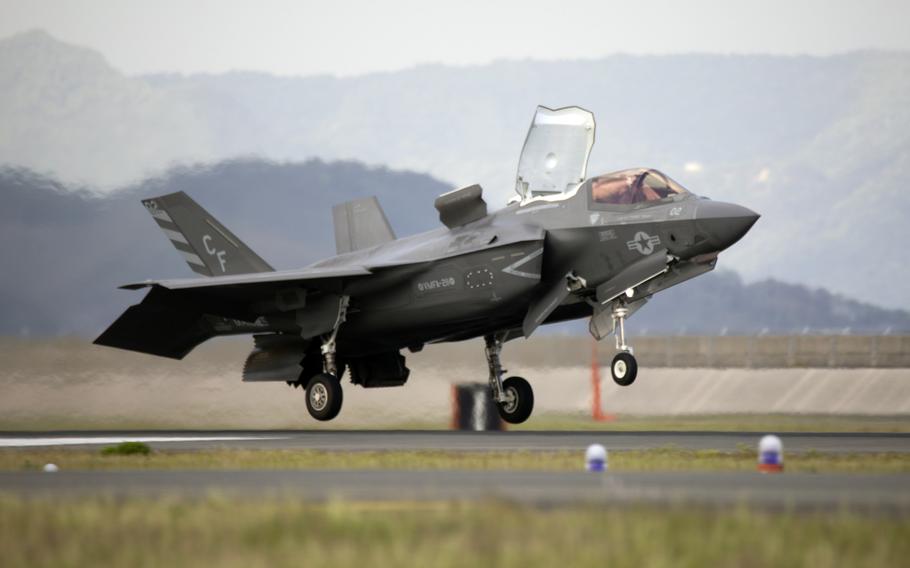
An F-35B Lightning II with Marine Fighter Attack Squadron 211 lands at Marine Corps Air Station Iwakuni, Japan, May 10, 2025. (Erick Reyes/U.S. Marine Corps)
A fourth squadron of F-35B Lightning IIs arrived in Japan over the weekend to begin a six-month deployment, as the Marine Corps continues to modernize its aircraft in the Indo-Pacific.
Stealth fighters with Marine Fighter Attack Squadron 211 at Marine Corps Air Station Yuma, Ariz., arrived Saturday at MCAS Iwakuni under the Unit Deployment Program, according to a news release from the 1st Marine Aircraft Wing that day.
The squadron joins the wing’s Marine Aircraft Group 12 to provide “critical aviation support from naval and expeditionary environments” for U.S. and Japanese forces, the release said.
Wing spokesman Maj. Joseph Butterfield declined to say how many aircraft or Marines deployed with the squadron or how long it will be deployed, citing security reasons. A fighter attack squadron typically consists of about 10 aircraft, with pilots and maintainers, he said by email Monday.
MCAS Iwakuni is home to two permanently stationed F-35B squadrons and another unit from Yuma, Fighter Attack Squadron 214, which arrived in March as the first F-35B rotational unit in Japan. The aircraft group also includes an aerial refueling squadron and logistics and support squadrons.
Until recently, the deployment program involved squadrons of F/A-18 Hornets and AV-8B Harriers. Hornets still deploy under the program as the Marines transition from fourth- to fifth-generation aircraft, but none are deployed to MCAS Iwakuni, Butterfield said.
“We are working toward modernization efforts throughout Marine Corps aviation,” he said. “This comes from the 2022 Aviation Plan that supports Force Design 2030 to improve capabilities and restructuring Marine Corps aviation.”
The two rotational squadrons will support III Marine Expeditionary Force and joint force operations across the Indo-Pacific, Butterfield added.
The rotational presence “allows 1st Marine Aircraft Wing to maintain a continuous, forward-deployed posture while integrating additional squadrons into its daily training and operations,” he said.
The base is also home to Carrier Air Wing 5, the Navy’s air arm for the aircraft carrier USS George Washington, homeported at Yokosuka Naval Base, Japan.
While deployed, the 211 squadron will participate in upcoming exercises alongside Japan and other allies, Butterfield said. The first F-35B rotational squadron flew alongside U.S. and South Korean air forces in Freedom Flag, which began in April and concluded May 2.
Lt. Col. Stephen Miggins, the 211 squadron commander, said he is “proud to augment MAG-12’s squadrons during exercises in the Indo-Pacific.”
“I arrived ahead of the rest of the squadron and was impressed by the enthusiasm of the local community during MCAS Iwakuni’s Friendship Day on May 4,” he said in a statement relayed by Butterfield. “While our deployment here will be brief, it will be focused on strengthening our partnerships and working alongside Japanese forces and other allied nations.”